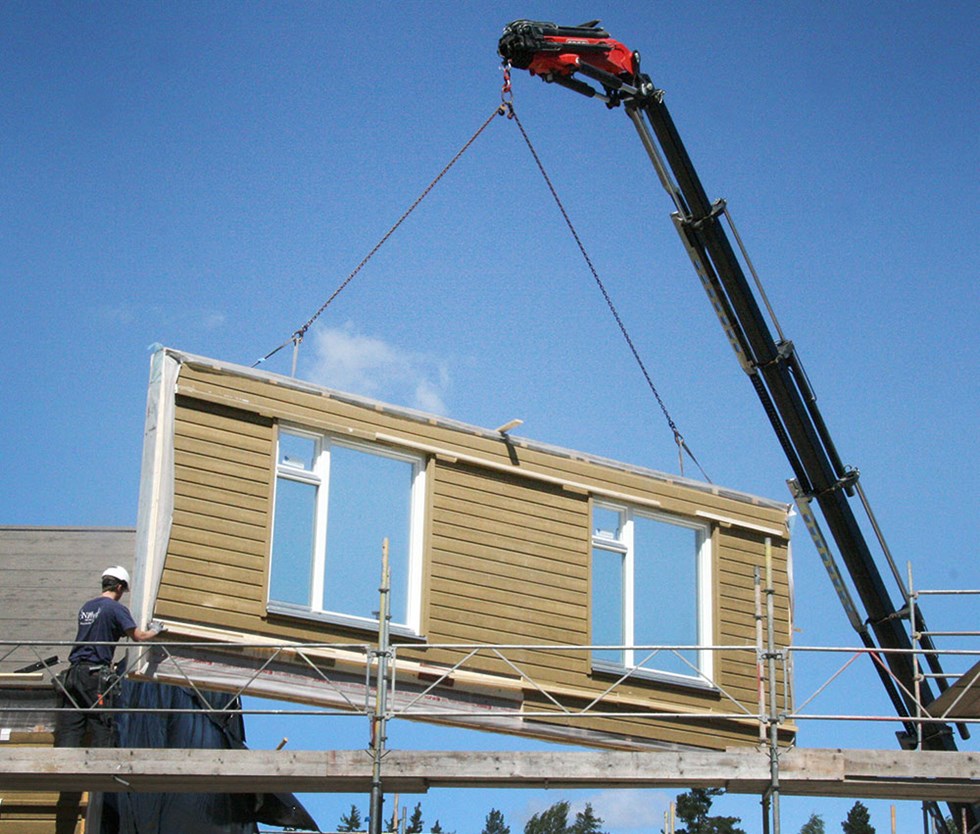Save money
Industrial construction in wood (an industrial lightweight construction system) is without doubt the most cost-effective method in the construction and housing market today.
Higher productivity
Modernisation of construction methods makes the work more efficient and enables the organisation to be slimmed down. More buildings can then be constructed with the same use of resources in terms of personnel and equipment.
Transport halved
Industrial construction in wood can practically halve transport costs, partly due to the raw material weighing less than traditional construction materials, and partly because it can be produced in the local vicinity. Another key factor is that panels and volumetric units are prefabricated in a factory. This reduces the number of people involved to a bare minimum, which means fewer trips to and from the construction site.
Shorter construction time
Time is money. It goes without saying that a build that takes 10 weeks instead of a year is considerably more cost-effective for everyone involved. For certain types of housing under major price pressure, wood construction techniques with a high degree of prefabrication have quickly achieved a dominant position for blocks of up to five storeys. Student accommodation is a prime example of this. This dominant market position for industrialised construction in wood is due in no small part to apartment dimensions that allow the use of standardised volumetric units.
Looking to the future, we can see many areas where building in wood using industrial techniques is likely to become the go-to solution. The low weight of the material has already been exploited in a number of notable vertical extension projects, where existing buildings have had 1–4 new storeys added. With the advent of new legislation allowing three-dimensional property registration, this type of construction is certain to really take off.
Less risk of unexpected costs
Industrial construction in wood reduces the risk of nasty surprises, since on delivery, the housing is as close to final completion as possible. This also minimises the risk of unexpected costs.
More jobs
Another positive aspect is that many factories are located in more rural areas, close to the forest raw material, bringing jobs to rural communities.

A closed panel, built with high precision in a factory, is delivered to the construction site for immediate assembly.

